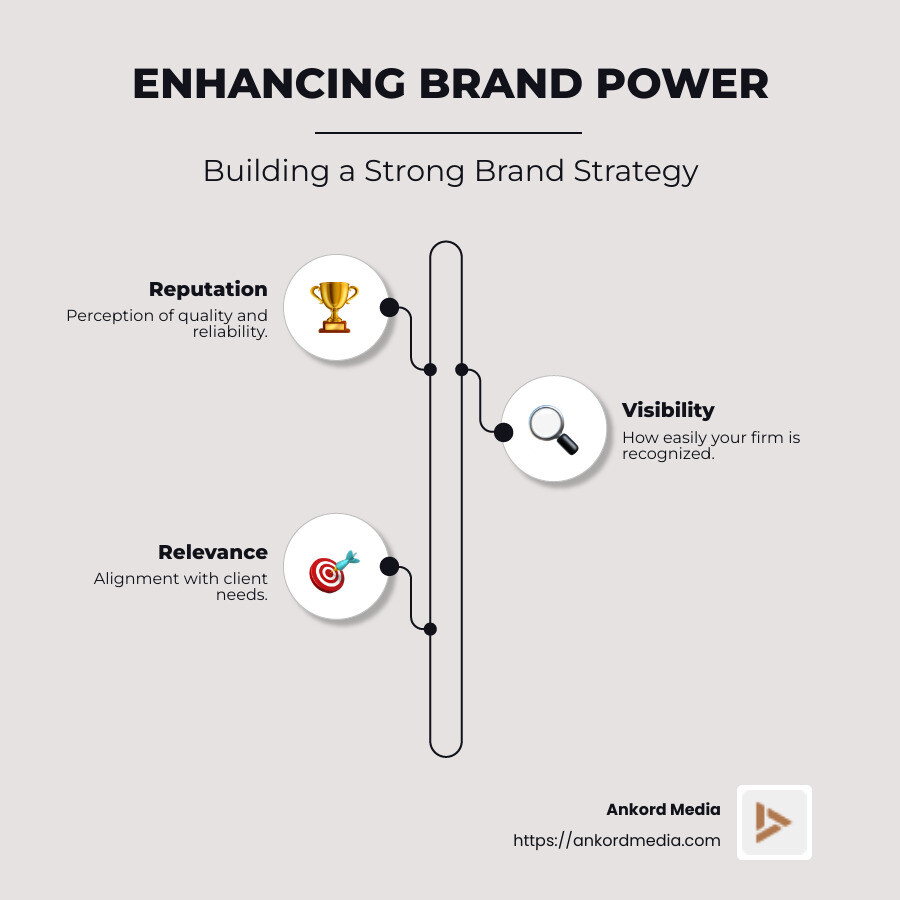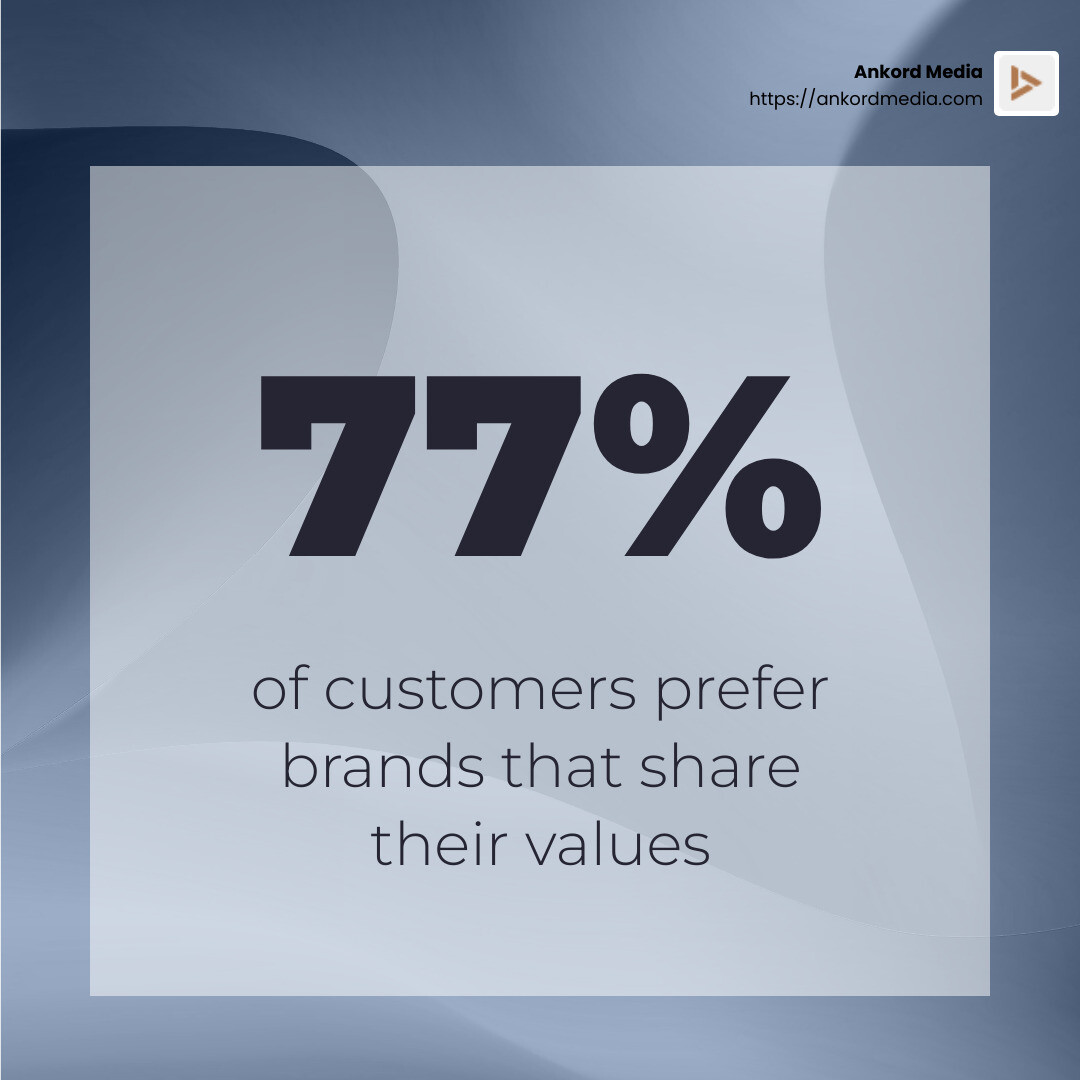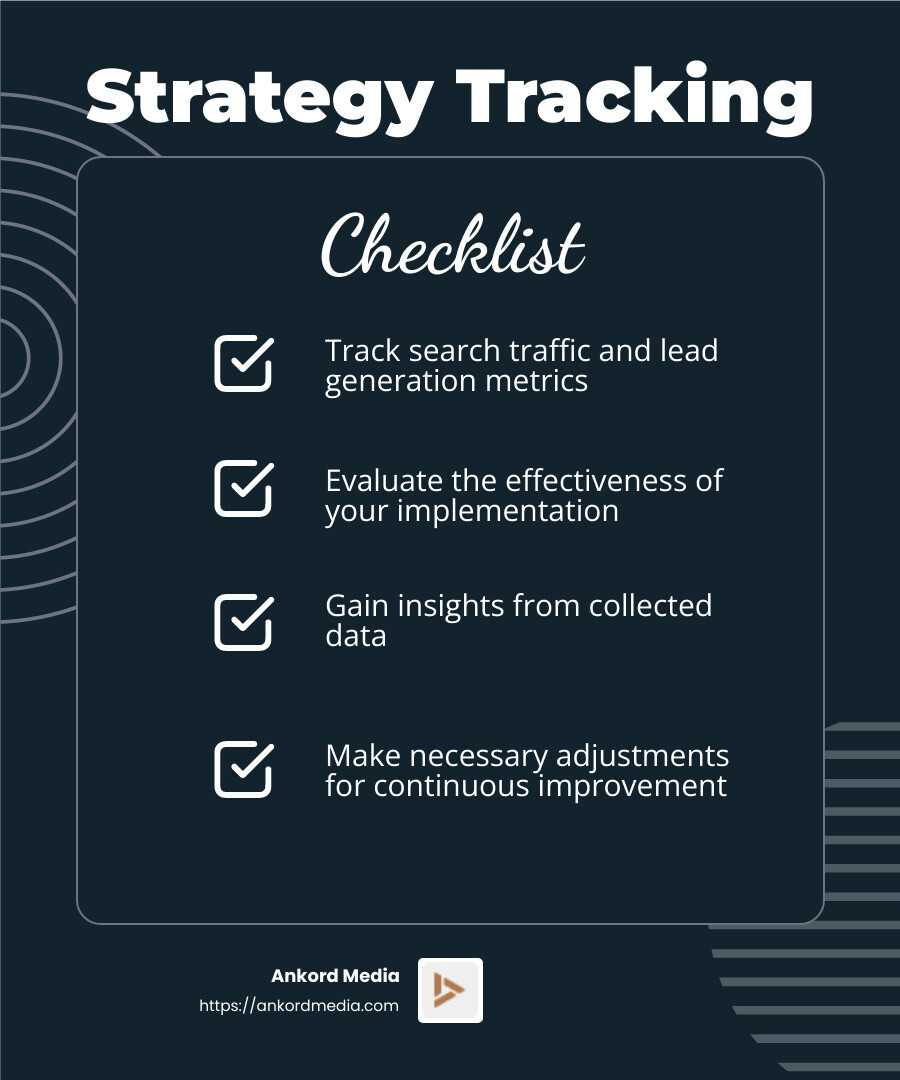Crafting a Brand Development Strategy That Works

Open uping Brand Value: A Path to Success
In professional services, a brand development strategy is key to business growth and success. Simply put, this strategy is about growing your firm’s reputation and visibility. Reputation is what people think of your services, while visibility is how easy it is for people to find you. Together, these form the backbone of a strong brand, helping to connect with clients and stand out in the market.
- Reputation: How clients perceive the quality and reliability of your services.
- Visibility: How widely recognized and easily found your firm is.
- Relevance: How well your services meet target clients' needs.
Brand development is about crafting a compelling identity that resonates with your audience, ensuring your firm’s reputation matches its visibility.
I’m Milan Kordestani, a passionate entrepreneur with deep insights into creating and implementing brand development strategies that resonate. From my experiences in Silicon Valley and as the founder of Ankord Media, I offer guidance that aligns visionary ideas with market realities. Let's dive deeper into how a thoughtful brand development strategy can transform your business.

Brand development strategy word roundup:- brand management strategies- brand strategy services
Understanding Brand Development Strategy
A brand development strategy is like a roadmap for your brand's future. It's about setting long-term goals that guide your brand toward becoming a favorite among consumers. But how do you achieve that? Let's break it down.
Long-Term Goals
Setting clear, long-term goals is the first step. These goals should answer questions like, "Where do we want our brand to be in five or ten years?" and "How will we know when we've succeeded?" It's not just about making sales today; it's about building a brand that stands the test of time. A great example is Apple, which has consistently focused on innovation and user experience to maintain its position as a leading tech brand. Their long-term vision has helped them stay relevant and desirable over the years.
Brand Identification
Next, consider how your brand is identified by consumers. This involves more than just your logo or color scheme. It's about the feelings and thoughts people associate with your brand. For instance, Airbnb has crafted a unique identity by offering a "home away from home" experience. They focus on belonging and community, which makes them stand out in the crowded travel industry.
Consumer Preference
Understanding consumer preference is crucial. You need to know what your target audience wants and how your brand can fulfill those desires. This involves researching and analyzing consumer behavior to align your brand with their needs. According to a study, 77% of customers prefer to buy from brands that share their values. This means your brand strategy should resonate emotionally with your audience, as seen with companies like Airbnb, which uses storytelling to create authentic connections.

In summary, a successful brand development strategy focuses on setting long-term goals, crafting a unique brand identity, and aligning with consumer preferences. This approach helps your brand gain recognition and loyalty, ensuring its growth and success in the competitive marketplace.
10-Step Brand Development Strategy
Consider Your Overall Business Strategy
Before diving into the specifics of brand development, it's crucial to align your brand development strategy with your overall business strategy. Think of your business strategy as the big picture. It encompasses your growth objectives, differentiation tactics, and long-term vision.
For instance, a company aiming for rapid growth might focus on aggressive market penetration and differentiation from competitors. Differentiation is key here—what makes your brand unique? Your strategy should highlight these unique attributes to set you apart in the marketplace.
Identify Your Target Clients
Who are you trying to reach? Identifying your target clients is foundational to any brand development strategy. Specialization can be a powerful tool. By focusing on a specific niche, you can tailor your messaging and services to meet the unique needs of that audience.
A well-defined target audience helps ensure your brand messages resonate and engage effectively. Nearly 60% of consumers feel businesses need to better understand their needs.
Research Your Target Client Group
With your target clients in mind, research is the next step. Understanding your clients' needs, preferences, and perceptions is essential. This involves gathering data on demographics, behaviors, and motivations.
Market perception plays a critical role here. How do your clients view your brand compared to competitors? This insight will help you position your brand more effectively in the marketplace.
Develop Your Brand Positioning
Brand positioning is all about differentiation. Your positioning statement should clearly articulate what makes your brand different and why clients should choose you.
A positioning statement typically consists of a few sentences that capture your brand's essence. Ensure it's grounded in reality, as you'll need to deliver on these promises. This statement becomes the foundation of your brand development strategy.
Develop Your Messaging Strategy
Your messaging strategy translates your brand positioning into audience-specific messages. While your core message remains consistent, tailoring it to different audiences is essential.
For example, potential clients might be interested in your product's benefits, while potential employees might focus on company culture. Address each audience's specific concerns and provide evidence to support your claims.
Develop Your Name, Logo, and Tagline
Your brand's visual identity, including its name, logo, and tagline, is a crucial component of your brand development strategy. These elements should visually express your brand's core values and resonate with your target audience.
While a name change isn't always necessary, a fresh logo or tagline can support new brand positioning efforts. It's not about what you love; it's about what communicates best to your audience.
Develop Your Content Marketing Strategy
Content marketing is a powerful tool in the digital age. It involves creating valuable, educational content that attracts and nurtures prospects. This strategy not only increases visibility but also improves your brand's reputation.
By focusing on educational content, you position your brand as an authority in your field. This approach builds trust and makes your brand more relevant to your target audience.
Develop Your Website
Your website is the digital face of your brand. It's where potential clients learn about your services and expertise. A well-designed website should be optimized for search engines (SEO) to ensure your brand is easily findable online.
Your website should house valuable content that reflects your brand's voice and tone. It serves as a hub for your brand's online presence.
Build Your Marketing Toolkit
A comprehensive marketing toolkit includes digital collateral like sales sheets, e-brochures, and pitch decks. These tools help convey your core services and market expertise.
Videos are increasingly important in marketing toolkits. Firm overviews, case studies, and meet-the-partner videos can improve both business and brand development.
Implement, Track, and Adjust
Finally, a brand development strategy is only effective if implemented correctly. Track your progress and measure results using objective metrics like search traffic and lead generation.
Ask yourself: Did the implementation go as planned? What insights can you gain from the data? Use this information to make necessary adjustments and refine your strategy for continuous improvement.

Successful Brand Strategy Examples
When it comes to brand development strategy, few companies have mastered it as well as Apple and Airbnb. These brands have created emotional connections with their audiences, using storytelling to cement their identities.
Apple: Innovation and Emotion
Apple is a prime example of a brand that evokes strong emotions. Their strategy isn't just about selling products—it's about selling a lifestyle. Apple's brand strategy revolves around creativity, innovation, and empowering people through technology. They focus on simplicity and user-centric design, which helps forge a meaningful connection with their customers.
Apple's "halo effect" is a powerful phenomenon. It creates anticipation and desire for new products. This effect is partly due to their content marketing strategy, which highlights product benefits and provides value to customers. Apple uses high-quality, engaging content across their website, social media, and other platforms to keep their audience informed and excited.
The "Mac community" demonstrates Apple's success in building a loyal customer base. This community has supported Apple through tough times and allowed the company to maintain premium pricing. By focusing on the high-end market and prioritizing profits over market share, Apple has established a strong brand identity and a devoted following.
Airbnb: Belonging and Storytelling
Airbnb's brand strategy is all about creating a "home away from home" experience. Their mission is to make people feel like they belong anywhere in the world. Airbnb achieves this through captivating storytelling, sharing real stories from hosts and guests across various digital platforms.
By showcasing these stories, Airbnb highlights the unique experiences and perspectives of their community, reinforcing their mission and establishing a deeper emotional connection with their audience. This approach resonates with consumers who crave authentic and personalized experiences.
Airbnb's use of a simple and open design, along with a recognizable red and white color scheme, evokes feelings of comfort and security. Their branding strategy effectively communicates relaxation and sanctuary, making their brand memorable and appealing.
These examples demonstrate how a well-crafted brand development strategy can create emotional connections and drive brand loyalty. By focusing on storytelling and understanding their audience's needs, both Apple and Airbnb have set themselves apart in the market.
Frequently Asked Questions about Brand Development Strategy
What is a brand development strategy?
A brand development strategy is a long-term plan designed to help a brand achieve its goals. It's not just about logos or color schemes—it's about creating a unique identity that consumers recognize and prefer. This strategy aims to build brand awareness and brand equity over time. Think of it as a roadmap for making your brand stand out and stay relevant in a crowded marketplace.
A successful brand development strategy involves understanding your brand's mission and the promises you make to your customers. It's about defining what problems your brand solves and how it benefits its intended audience. By aligning your brand's values with those of your customers, you can create a lasting connection that drives loyalty and growth.
What are the key components of a brand strategy?
A solid brand strategy revolves around a few key components:
- Mission: This is the core purpose of your brand. It's what you stand for and why you exist. A clear mission guides all your branding efforts and ensures consistency in your messaging.
- Customer Promise: This is what you pledge to deliver to your customers. It's the value they can expect from your brand. Keeping this promise builds trust and strengthens your relationship with your audience.
- Brand Awareness: This refers to how well consumers recognize and recall your brand. The more aware people are of your brand, the more likely they are to consider it when making purchasing decisions.
- Brand Equity: This is the value your brand adds to your products or services. Strong brand equity can lead to customer loyalty, premium pricing, and competitive advantage.
By focusing on these components, you can create a brand strategy that not only attracts new customers but also retains existing ones.
How do you measure the success of a brand strategy?
Measuring the success of a brand strategy can be challenging because it often involves intangible elements. However, there are several metrics you can use to gauge its effectiveness:
- Brand Awareness: Surveys, social media mentions, and search engine queries can help you understand how well-known your brand is.
- Brand Equity: This can be assessed through customer loyalty, perceived quality, and brand associations. Higher brand equity often translates into increased market share and profitability.
- Customer Engagement: Track interactions on social media, website visits, and customer feedback to see how engaged your audience is with your brand.
- Sales and Revenue: While not purely brand-driven, an increase in sales and revenue can indicate a successful brand strategy.
Regularly evaluating these metrics allows you to adjust your strategy as needed, ensuring that your brand remains strong and competitive in the market.
Conclusion
At Ankord Media, we believe that strategic branding is more than just creating a logo or a catchy tagline. It's about crafting a story that resonates with your audience and builds authentic connections. Our approach combines strategic branding with cutting-edge design and technology to transform bold ideas into tangible success.
We partner with visionary clients who are ready to challenge the status quo and rewrite the future. By focusing on genuine customer connections, we help brands not only stand out but also create lasting relationships with their audiences. Our goal is to amplify your brand's unique voice and ensure it remains relevant in an ever-changing market.
Whether you're looking to improve your brand's visibility or strengthen its reputation, Ankord Media is here to guide you through every step of your brand development strategy. Our expertise in storytelling and design ensures that your brand not only captures attention but also fosters loyalty and growth.
For more insights into how we can help lift your brand, visit our strategic branding services page. Let's turn your vision into reality and craft a brand that truly connects.

